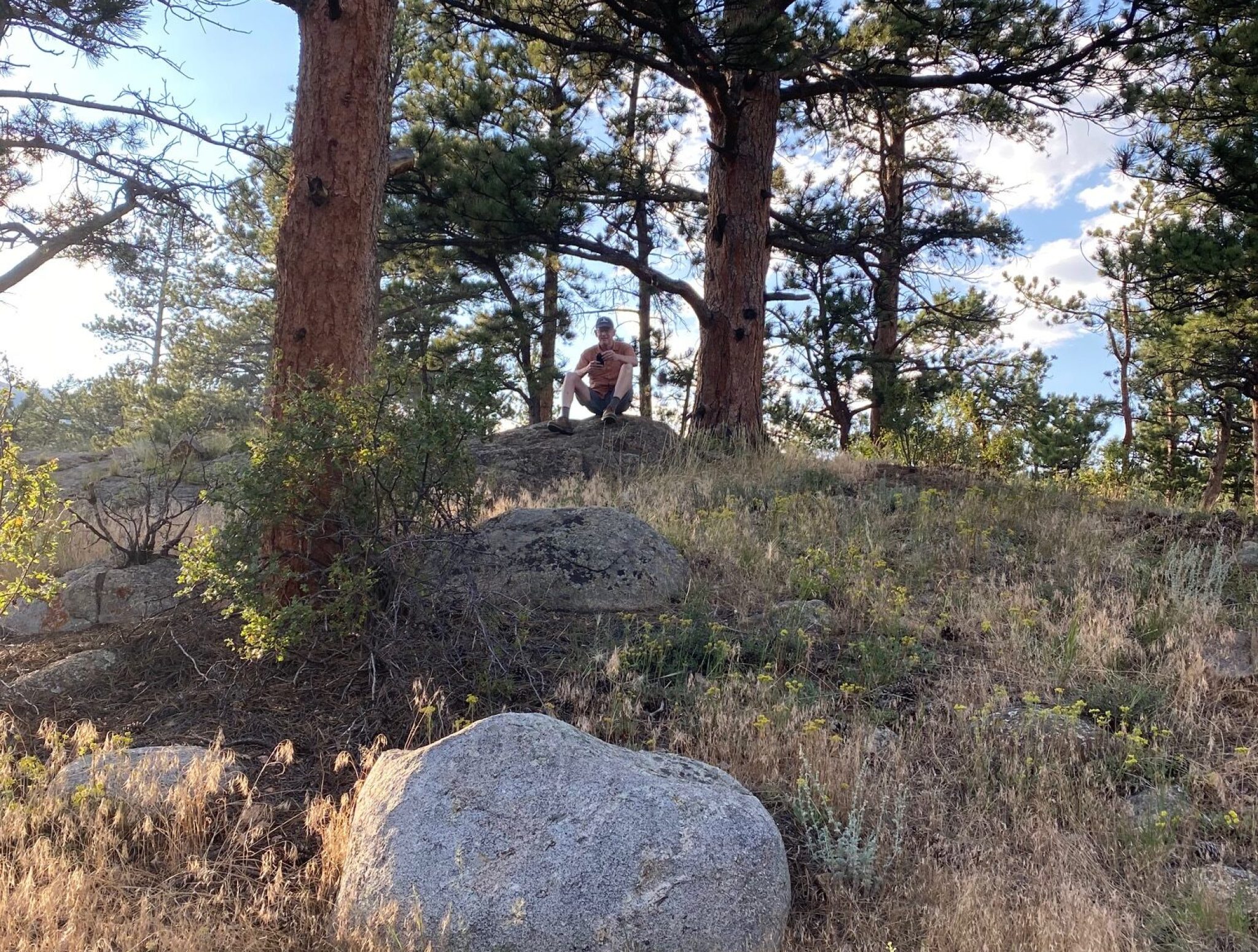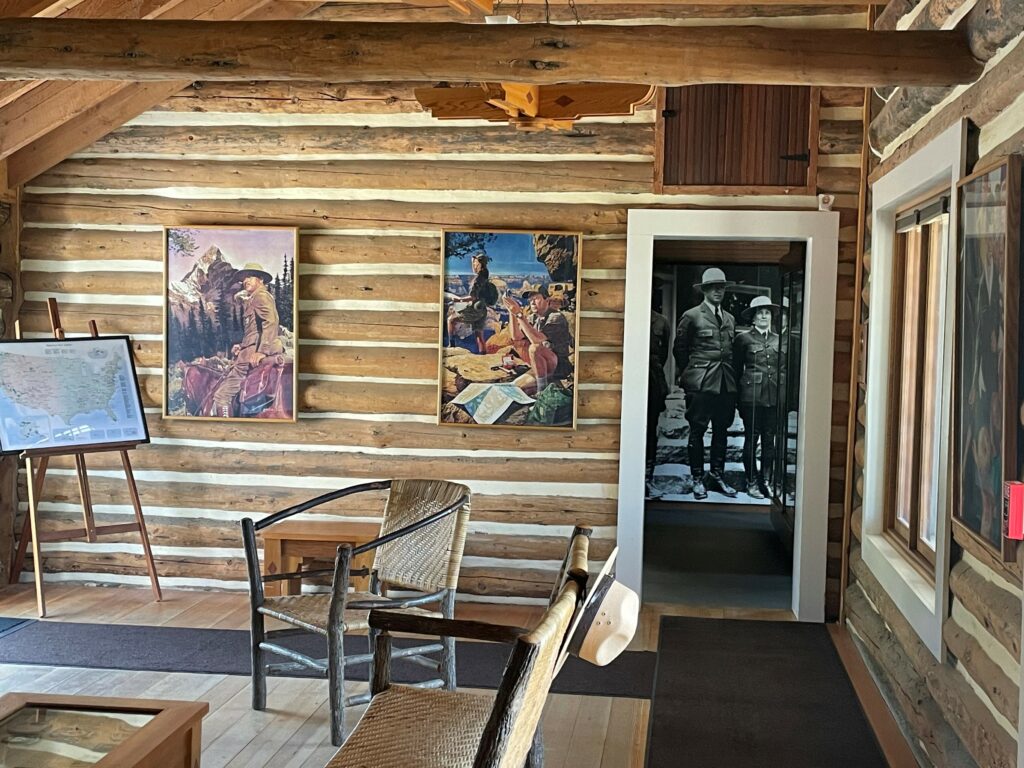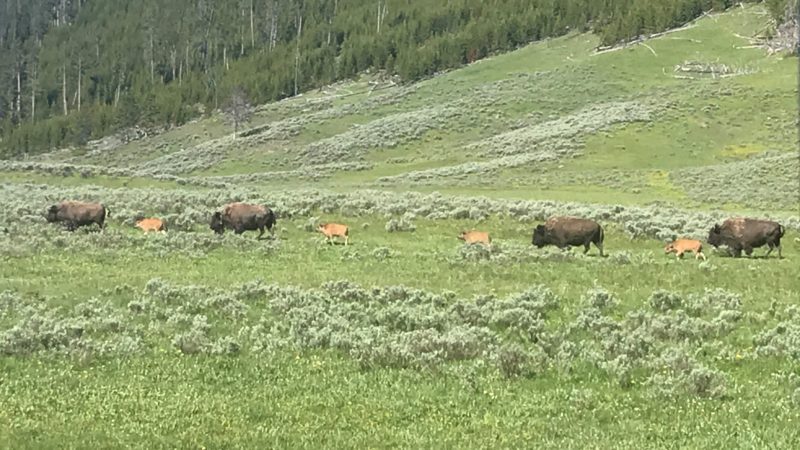A Ranger, A Rock, A Renovation
August, 2022
I was in luck. Three park rangers were standing right in front of me on the porch of the campground’s ranger station. I was in dire need of their expertise, yet I also knew it was possible none of them could help me. Fortunately, double luck was present. One of the three rangers possessed the critical know-how. He too used Verizon as his cell carrier, so he could tell me what location in the campground offered the best cell service. He made sure I understood best didn’t necessarily mean good.
There was literally no cell signal to be had at our own campsite in the Moraine Park Campground of Rocky Mountain National Park. However, in driving around the rest of the campground, we saw fleeting signs of a Verizon signal, so we knew there was hope. One of the other rangers informed me that AT&T and T-Mobile had better signals than Verizon in the campground due to a shared tower a few miles away outside the park. Good to know, possibly for the future.
A Rock Around the Block
Fortunately, my Verizon ranger directed me to his two special locations. One was at the picnic table of another campsite, which was currently occupied. Using that location would have been uncomfortable for us all. The other site was a rock outcropping up the side of a hill beside the main campground road. Not too hard to get to even though it was 90 feet higher than our campsite and about a quarter mile distant. Kind of like a walk around the block, other than when you are already camped at an elevation of 8,100 feet, every extra foot up is relevant.
Once on top though, I was receiving upwards of a 5G signal with three bars. Ok, frequently two bars and often just LTE. But it was always there. And thus, Ranger Rock was scaled and named. What made it extra special is I could sit atop Ranger Rock in the shade of a pine tree, watching the camp traffic pass by below as I patiently waited for news to download and text/email messages to populate. Even with a signal present, I still believe Verizon was randomly throttling me on downloading data. However, that’s a suspicion and complaint for another day.
A Ranger When You Need One
Park rangers are the greatest. Not only do they run and maintain the parks, they answer both your important and inane questions. They direct you to the best locations in the park. They patiently advise you to keep a safe distance from cute little animals such as bear, bison, and elk. They stand ready to provide first aid. And they seem to love interacting with children. They are truly dedicated.
It was 26 years ago when we last camped in Rocky Mountain National Park. Back then we had our three children in tow. Besides hiking around the park’s Bear Lake and their excitement watching all the deer regularly graze through the campground, the Junior Ranger Program put on by the park rangers may have been their favorite thing to do. We think the presence of rangers is a big reason so many families like camping in our national parks. The hour or so a day our children were learning about the park was also a time Julia and I appreciated. Our kids had ranger time, we had downtime.
On the current trip, we witnessed a group of rangers render help to a hiker at Bear Lake who was having a medical emergency. Fortunately, she survived, no doubt in part to the half-dozen or so rangers who came to her aid. Given the crowds on the park’s more popular hiking trails and the unpreparedness of many visitors, we suspect ranger aid is a common occurrence.
A Renovation Past Due
Twenty-six years between visits is a long time. But as we drove into the campground this past month, it could have been 100 years. We remembered camping in Moraine Park Campground, but it didn’t look like what we recalled. It now seemed much bigger with more hills. Perhaps our memories are fuzzy and our legs have aged. Or maybe the campground expanded over the years due to the growing demand for camping in our nation’s parks. But what was unmistakably familiar was the camping experience of many national park campgrounds. No electricity, the occasional water faucet supplying drinkable water, sometimes flush toilets, other times vault toilets (latrines), campsites showing their age. And pretty much no cell signal.
Don’t get us wrong, this “rusticity” doesn’t deter us (or many others) from the national parks. The simpler life, a chance to get away from it all and unwind amid magnificent scenery. Ok, ok, if we are being totally honest here, since we live on the road for weeks at a time, electricity for our van and a cell signal for our phones are nice creature comforts to have. But we will gladly trade the creature comforts for the scenery most any day.
Fortunately, the national parks are getting some additional funding for improvements, or more accurately, for a portion of their deferred maintenance needs which totals approximately $22 billion. This is maintenance that should have already been done if the National Park Service had the money. The added funding is being made possible by the Great American Outdoors Act of 2020 and the Infrastructure Investment and Jobs Act of 2021. Here are a few deferred maintenance and repair amounts on the books for national parks we have visited recently:
$ Needed to Bring Park to a “Safe and Acceptable Condition”
Glacier $ 99 million
Rocky Mountain $118 million
Mesa Verde $121 million
Grand Tetons $149 million
Yellowstone $929 million (before the floods of June, 2022)
Grand Canyon $940 million
After this summer season, Moraine Park Campground will be closed for a while as it gets an overdue renovation, including adding electricity for some campsites, fixing flood and drainage issues, repairing the campground’s utilities, and upgrading the ranger station to better handle the crowds. The latrines will remain in place.
Back to the Rock
We don’t know when cell service will be more prevalent in some of our nation’s most popular parks, but there’s also something wonderful about disconnecting and roughing it, even a little. Not having 24×7 connectivity gets you away from your screens and into the outdoors to enjoy nature and explore. Then when you’ve had enough solitude, going out to discover your own Ranger Rock.
And if you are like us, the assistance of one or more of the dedicated park rangers will make all your explorations even better. Collectively, the rangers are the rock-foundation of the National Park Service. The organization couldn’t have better ambassadors. Give them a cheer.
Bob and Julia



Ps: Besides the rangers, the next best thing travelers to the national parks should use is the nps.gov app. You can download all the info on a particular park (maps, things to do, road closures, etc.) and have it handy in the app even when you are without cell service hiking the backcountry or just lounging around your campsite.
Header photo is of Emerald Lake (elev. 10,110 feet) in Rocky Mountain National Park. The hike to it is worth it.
You Might also like
-
Day One, Mile Zero
We’re taking our first step – or rather, driving our first mile. As corny as it may sound, we are hitting the road to discover America.
-
Normal: Natural, Ordinary, Routine
Whether we are sheltering in place or venturing out, we’re all adapting to a changed world.
-




